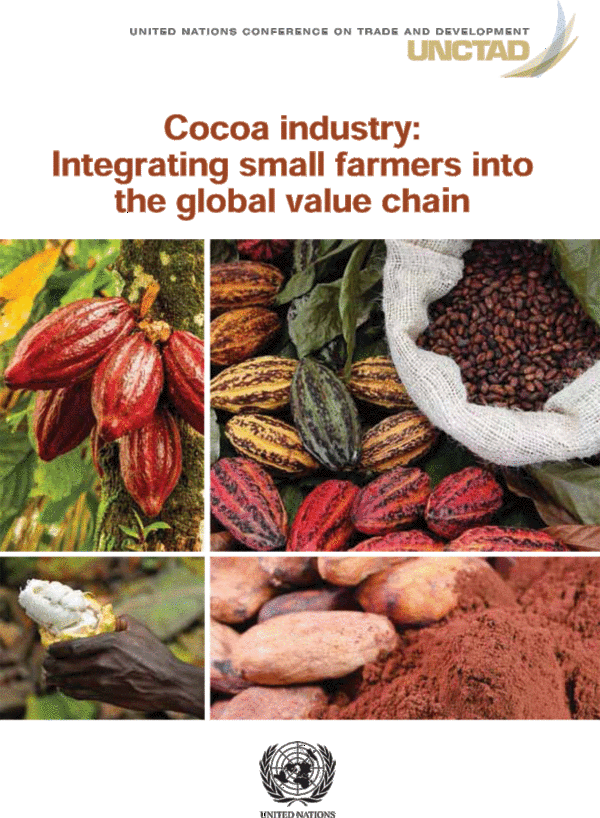- Share this article
- Subscribe to our newsletter
Integrating small farmers into the global value chain
Cocoa is an important commodity for the producer and consumer countries. However, value added is unequally distributed, as the Cocoa Barometer 2015 indicates. In Côte d’Ivoire and Ghana, for example, cocoa exports account for around 30 per cent of export revenue.
However, the cocoa producers in the two countries only earn between 2.07 and 2.69 US dollars a day with two hectares of land, and they are just a few cents above the poverty line of 1.90 USD. In reality, the families don’t even reach this value because this income has to suffice for an average five individuals per family. The young generation therefore prefer to shift to growing gum trees and palm oil. Or they leave their villages.
A recent report by the United Nations Conference on Trade and Development (UNCTAD), “Integrating small farmers into the global value chain”, complains that attempts to integrate cocoa farmers into the value chain in the 1980s and 1990s failed. Multinational corporations verticalised production, gaining control of the global and local cocoa trade.
One reason for market concentration is the high volatility of the cocoa prices. From 2000 to 2002, the price per tonne rose from 888 US dollars to 1,778 USD, only to drop again by 14 per cent in the following year. These developments were driven by fluctuations in stocks and political crises in Côte d’Ivoire.
Smallholders with two to four hectares of land produce 80 to 90 per cent of all cocoa production. They see to the labour-intensive care of the plants, harvesting the fruits and drying the beans. Marketing outside the smallholding is taken over by national marketing platforms that pay fixed prices for the cocoa beans. Since market liberalisation in the 1990s, the cocoa farmers have often been selling their goods straight to export merchants or brokers.
The manufacturing steps of roasting and pealing are done outside the smallholdings in the importing countries. Only during the last few years has this process been performed increasingly in the country of produce – but still outside the smallholdings.
The market power of the buyers grew in the 1990s and has spawned around ten global corporations. Today, Callebault, Cargill and ADM account for around 50 to 60 per cent of world-wide cocoa production. Via traceability and optimised resource allocation, vertical production has yielded a number of advantages. Nevertheless, the industrialisation of the process has not brought about any incentives for further developments at the level of the smallholders. Despite their being the backbone of cocoa production, the smallholders have become the weakest link in the chain. They are at the whim of the volatilities of world market prices.
Based on its analysis of the market situation, UNCTAD arrives at the following recommendations for action:
- Competition between the cocoa merchants needs to be strengthened again, both locally, nationally and internationally.
- The cocoa markets ought to be made more transparent for everyone involved.
- The smallholders ought to develop commercial associations and step up their market power vis-à-vis the merchants.
- Ultimately, the cocoa growers themselves should be able to sell various processed products themselves, too, also to achieve higher prices.
Roland Krieg, Journalist, Berlin/Germany
More information
Cocoa Barometer





Add a comment
Be the First to Comment